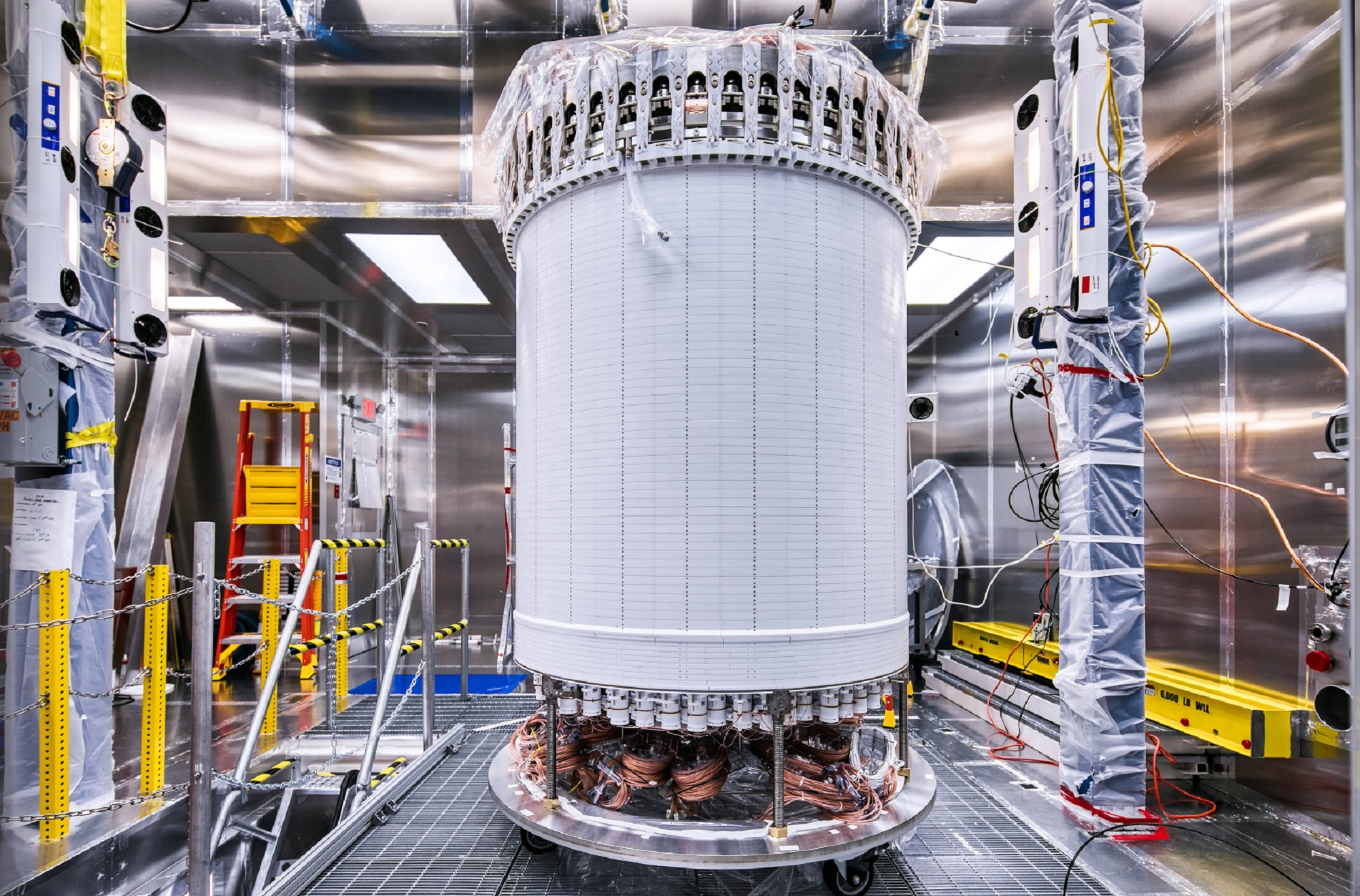

The hunt for dark matter is underway underground. In a first run with LUX-ZEPLIN (LZ) that lasted for more than three months and ended this April, the world’s most sensitive dark matter detector found no signs of hypothetical dark matter bits called Weakly Interacting Massive Particle (WIMPs) in space. Despite the lack of hard data, scientists confirmed the US Department of Energy-led experiment is working as planned, leaving the possibility of finding dark matter in future rounds.
“For now it’s kind of a weird thing, we’re saying that we’re the best in the world at finding nothing, but the prospect of finding new physics a few years from now is entirely feasible,” Chamkaur Ghag, an astroparticle physicist and professor at the University College London and team member of the LUX experiment, told New Scientist.
Dark matter is thought to make up 27 percent of the universe (the visible matter in stars and galaxies might only comprise 5 percent of it). That said, no one has ever detected it. That’s because dark matter contains particles that do not emit, absorb, or reflect light, making it difficult to even measure with electromagnetic radiation. But physicists and astronomers know dark matter exists because of the gravitational effects it has on visible objects, like keeping stars from slingshotting around space and preventing galaxies from collapsing. It is hypothesized to be the invisible glue holding the universe together.
[Related: Meet the mysterious particle that’s the dark horse in dark matter]
WIMPs have been scientists’ best bet at detecting dark matter. Other hypothesized dark matter such as photons or axions are very small and behave like waves. But WIMPs contain mass and rarely interact with other visible matter. Billions of WIMPs also pass through us every second. By studying dark matter, experts will have a better understanding of what the true base of the universe is—and what we can expect to happen to it in the future.
The key to unlocking the secrets of the universe is buried a mile below the Black Hills of South Dakota. The LZ experiment is composed of two next titanium tanks filled with 10 tons of pure liquid xenon tanks. It also contains two arrays of photomultiplier tubes that can detect the faintest light. If dark matter in the form of WIMPs collide with a xenon atom, it will knock over loose electrons. The particle collision produces a brief shimmer of luminosity the LZ experiment picks up.
The experiment is underground because cosmic radiation and the radiation from human bodies could muffle dark matter signals. So, submerging the detector helps increase its sensitivity and chances of finding a sign of dark matter. “You’re trying to hear a whisper. You do it in the middle of New York City, you’re not going to hear it, there’s just too much noise. You want to get away from our backgrounds—the cosmic rays and junk we’re bombarded by would hide the very rare signals we’re looking for,” Kevin Lesko, a senior physicist at the Lawrence Berkeley National Laboratory, who coordinates the LZ project, told Popular Science in 2020.
[Related: What we learned from the Large Hadron Collider on its first day back in business]
While, the first round of results did not find dark matter, it did show the machine is working well and functioning within expectation. “Considering we just turned it on a few months ago and during COVID restrictions, it is impressive we have such significant results already,” said Aaron Manalaysay, a physics coordinator from the Berkeley Lab that led the effort for the experiment’s initial run, in a Berkeley Lab press release.
“We are now out of the starting gate,” said Harry Nelson, a professor of physics at the University of California, Santa Barbara and former spokesperson of LZ in a second press release. “LZ is a far more powerful detector of dark matter than any ever built before, and is uniquely capable of making a discovery in the next few years.”
